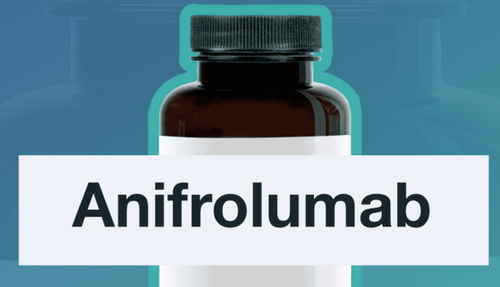1. What is Cayenne Pepper?
Cayenne pepper belongs to the family of flowering plants and is related to bell peppers. Cayenne pepper was originally grown in Central and South America, but Christopher Columbus brought it to Europe in the 15th century. Cayenne pepper is a popular spice used in many different styles of regional cooking, and they have been used in medicine for thousands of years.
Cayenne peppers have a fairly rich nutritional composition, including many antioxidants that are beneficial for your health.
A tablespoon of about 5 grams of cayenne pepper includes:
Calories: 17
Fat: 1 gram
Carb: 3 grams
Fiber: 1.4 grams
Protein: 0.6 grams
Vitamin A: 44% RDI
Vitamin E: 8 % RDI
Vitamin C: 7% RDI
Vitamin B6: 6% RDI
Vitamin K: 5% RDI
Manganese: 5% RDI
Potassium: 3% RDI
Riboflavin: 3% RDI
Capsaicin, the active ingredient in cayenne pepper, gives it healing properties. At the same time, cayenne pepper also offers a spicy flavor. So, is cayenne pepper hot? The spiciness of cayenne pepper depends on the amount of capsaicin contained in its composition. The more capsaicin a chili pepper contains, the hotter it gets.
2. Health benefits of cayenne pepper
2.1. Boost your metabolism
Capsaicin contained in cayenne pepper has metabolism-boosting properties and helps increase the amount of heat your body produces, so you can burn more calories each day. Cayenne pepper works to boost your body's metabolism through a diet-induced thermogenesis, increasing your metabolism.
A study using cayenne pepper shows that people who eat a breakfast containing capsaicin and medium-chain triglyceride oil burn 51% more calories in that meal, compared with those who didn't. Although capsaicin boosts metabolism, the overall effect is minimal.
In another study, people who eat 1 gram of red cayenne pepper burn only 10 extra calories within 4 and a half hours, compared with those who didn't. People who regularly use cayenne pepper may not find its benefits to the body over time, as the body has adapted to the effects of the chili.Capsaicin contained in cayenne pepper has metabolism-boosting properties and helps increase the amount of heat your body produces, so you can burn more calories each day. Cayenne pepper works to boost your body's metabolism through a diet-induced thermogenesis, increasing your metabolism.
2.2. Reduce hunger
Cayenne pepper can control your hunger, while helping you eat less along with making you feel full for a longer time. Many studies show that the compound capsaicin in cayenne pepper has the ability to help suppress appetite. However, peppers are not entirely understood, but one study has shown that it reduces the production of the hunger hormone named ghrelin.
People using the compound capsaicin eat less food during the day than those who did not. In addition, the subjects of this study also reported feeling fuller despite fewer calories consumed.
2.3. Lower blood pressure
High blood pressure is a huge health risk worldwide. In fact, more than 40% of adults over the age of 25 have high blood pressure. Other studies have also shown that the compound capsaicin in cayenne pepper can reduce high blood pressure.

2.4. Cayenne pepper can support digestive health
Dietary spices and their active ingredients can provide many benefits to your stomach. For example, in terms of digestive aids, cayenne pepper can help strengthen our stomach to defend against infections, increase the production of digestive juices, and help deliver food-degrading enzymes to the stomach. It also helps with digestion. Cayenne pepper does this by stimulating the nerves in the stomach to signal protection from injury.
While some people believe that spicy foods can cause stomach ulcers. An article has shown that the capsaicin in cayenne pepper can actually help reduce the risk of stomach-related conditions, taking stomach ulcers as an example.
2.5. Relieve pain
The compound Capsaicin can be a painkiller when applied to the skin in the form of a cream, because capsaicin helps reduce the amount of substance P - the nerve stimulant produced by the body, which is then transmitted to the brain to signal pain. When less substance P is produced, pain signals can no longer reach the brain and pain sensation is reduced. The compound capsaicin is commonly available in lotion form and is often recommended for:
 Joint and muscle pain
Joint and muscle pain  Lower back pain
Lower back pain  Post-surgery pain
Post-surgery pain  Pain associated with neurological conditions such as shingles
Pain associated with neurological conditions such as shingles
In addition, capsaicin cream should not be applied to open wounds or stretch marks.
2.6. May Improve Psoriasis
Autoimmune diseases are conditions in which your body attacks itself. Psoriasis - an autoimmune disease that presents as red, itchy, and scaly patches on the skin with varying degrees.
Currently, there is no cure for psoriasis. However, creams containing capsaicin can help relieve itching and improve the appearance of areas affected by psoriasis.
A study that examined the effects of the use of a compound capsaicin showed that psoriasis patients treated with capsaicin cream had significantly reduced scaling, redness, and patching of the skin compared to those with placebo cream use.
Compound P plays a role in psoriasis, and compound capsaicin has the potential to help reduce the amount of substance P your body produces.

2.7. Reduce the risk of cancer
Cancer is a disease characterized by uncontrolled growth of cells. The compound capsaicin in cayenne pepper has been shown to reduce the risk of cancer. These compounds may do this by attacking many different pathways during cancer cell growth.
Recent studies have shown that capsaicin can slow down the growth of cancer cells and even cause cell death for different types of cancer including: Prostate cancer, prostate cancer pancreas and skin cancer.
Although the effects of capsaicin on cancer cells seem to be promising, the current findings are based on the results of laboratory and studies on animals. Capsaicin's effects on human cancer have yet to be studied, so it's wise to take this information selectively.
2.8. Can be easily added to your diet
Cayenne pepper is easy to incorporate into your diet. At the same time, cayenne pepper ingredients come in many different forms, including foods, spices and supplements. You can add a dash of cayenne pepper to many of your favorite dishes, such as eggs, homemade fries, and even sauces. Alternatively, you can slice cayenne pepper and add it to a salad.

3. Risks and precautions of cayenne pepper
Cayenne peppers are approved to be safe to eat. However, eating too much cayenne pepper at once can make you sick to your stomach and feel nauseous. If you are taking medication for high blood pressure, such as: ACE inhibitors (Angiotensin-Converting Enzyme Inhibitors, namely Captopril, Enalapril, etc), consult your doctor before trying capsaicin cream because the combination can cause coughing. Finally, when applying capsaicin cream to the skin, do not apply it to open wounds or stretch marks.
To arrange an appointment, please call … or make your reservation directly HERE. You may also download the MyVinmec app to schedule appointments faster and manage your reservations more conveniently.
Reference source: healthline.com













